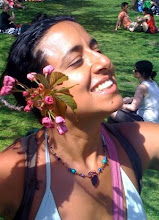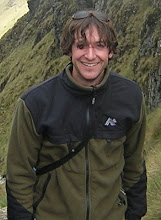
An ultra efficient inline pump moves the water between ponds allowing us to filter the water and grow more fish in a smaller area. I put the pump inside a used 50 gallon barrel with the bottom cut off. The barrel is buried in the ground to prevent the pump from freezing. This also places the pump below the water level in the pond so we don't need a priming pot or check valve. The outlet in the barrel is connected to an above ground switch so it's easy to turn on and off.

We have two different siphon systems to empty the water from the ponds and extract wastes. The nutrient rich water in the bottom of the ponds can be siphoned off into this channel through a permanent piping system. Containerized plants and worms will be grown in the channel. From here the water has two choices, it can either go back into the recirculated pond system for recycling or it can go into a retention area for pond draining.
The easiest way to harvest fish is to drain the pond and pick the fish up off the bottom. This system makes it possible with the turn of a valve.
This system also allows us to empty wastes from the pond. This will increase the amount of oxygen in the water making the fish happy. The waste water will be used to fertilize our plants.

A vegetated retaining wall will be installed here and will accept some waste water from the channel in the previous photo.
 Stairs leading to parking area installed by Rafael Moreno's crew.
Stairs leading to parking area installed by Rafael Moreno's crew.
 One of two retention ponds in the front of the houses. These accept rainwater from the roofs of the houses as well as water from the ponds if we need to drain them. Eventually this area will be planted with an edible and medicinal forest garden.
One of two retention ponds in the front of the houses. These accept rainwater from the roofs of the houses as well as water from the ponds if we need to drain them. Eventually this area will be planted with an edible and medicinal forest garden.





























